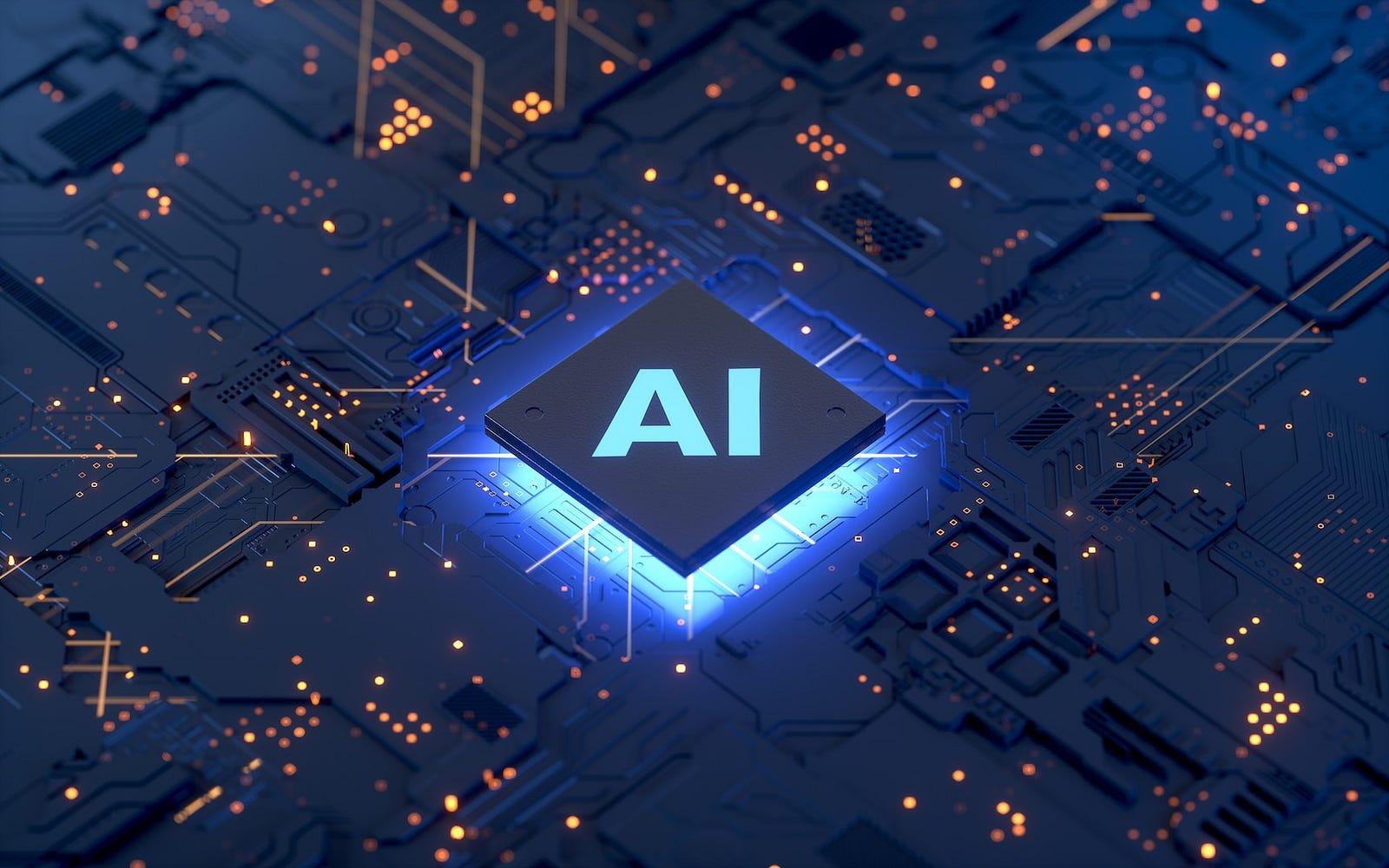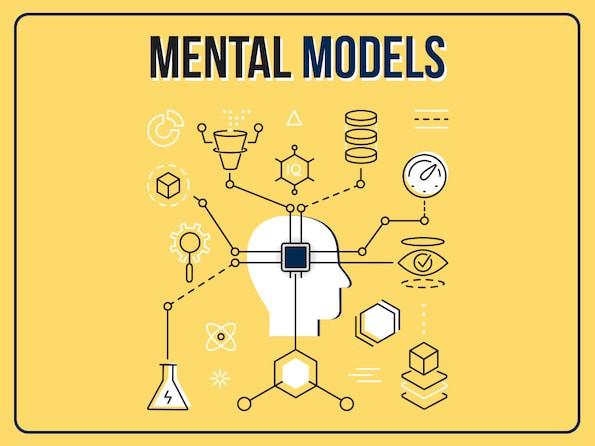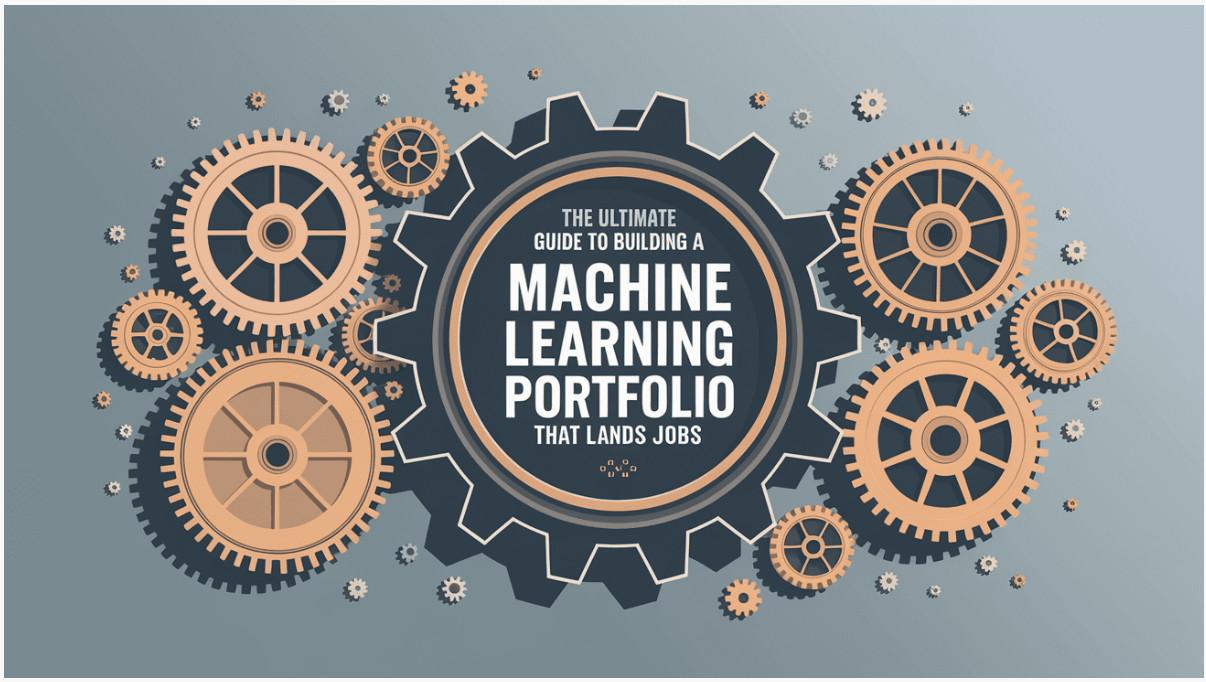Section 1: Introduction - The End of the LeetCode Era
For years, LeetCode has been the universal gatekeeper of technical interviews.
If you wanted to land a job at Google, Meta, or Amazon, you memorized hundreds of coding problems, optimized for time complexity, and hoped you wouldn’t blank under pressure.
But in 2025, the landscape of ML hiring is changing, fast.
Companies are starting to realize that solving isolated algorithm puzzles doesn’t necessarily translate to real-world impact.
A candidate who can reverse a linked list in O(n) might not know how to handle feature drift, design scalable ML pipelines, or evaluate the ethical implications of model outputs.
As machine learning moves from research novelty to production necessity, interview processes are evolving.
We’re witnessing a global shift, from LeetCode-heavy screens to case study-based evaluations that measure an engineer’s end-to-end thinking, judgment, and business impact.
a. Why LeetCode Is Losing Its Shine
LeetCode-style interviews were designed for a different era, one focused on algorithmic mastery and pure coding efficiency.
But ML engineering isn’t just about code; it’s about connecting math, systems, and meaning.
Top companies like Google DeepMind, Anthropic, and OpenAI are realizing that a perfect algorithmic performance doesn’t guarantee production success.
In fact, many engineers who ace traditional interviews struggle when faced with ambiguous, messy real-world ML problems.
That’s because real impact in ML rarely looks like a clean problem statement, it’s about making decisions under uncertainty:
- Should you prioritize model accuracy or latency?
- How do you handle skewed data distributions in production?
- What metrics truly capture business success beyond ROC curves?
These questions can’t be solved through rote practice, they require case-based reasoning.
b. The Case Study Revolution
Case study interviews replicate what engineers actually do day-to-day:
They’re asked to reason about data trade-offs, experiment design, feature engineering, and deployment challenges.
Instead of writing a DFS from memory, candidates might be asked to:
“Design a fraud detection pipeline that can adapt to new patterns without retraining every day.”
or
“Evaluate how you’d measure success for a personalized recommendation system with limited labeled data.”
This format doesn’t just test what you know, it tests how you think.
It allows interviewers to see how you navigate uncertainty, prioritize decisions, and balance engineering with ethics and business goals.
And for candidates, it’s far more meaningful: instead of grinding random problems, you demonstrate how you’d create real-world value.
c. What This Shift Means for ML Engineers
For engineers, this is both liberating and challenging.
You can no longer just memorize patterns; you must develop intuition, about data behavior, systems scalability, and stakeholder needs.
You’ll need to show that you can turn insights into impact, and communicate that clearly to both technical and non-technical audiences.
This evolution favors those who understand both the model and the mission.
If LeetCode was the era of algorithmic memory, case studies mark the rise of ML storytelling —
a new phase where engineers must explain not only how they solve problems, but why their solutions matter.
d. The Companies Leading the Shift
Some of the most forward-thinking organizations are already ahead of the curve:
- Meta has started integrating ML system design and ethical evaluation questions into its hiring loop.
- Amazon emphasizes customer impact metrics during its “bar-raiser” interviews for ML engineers.
- OpenAI uses “open-ended ML problem-solving exercises” to evaluate candidate reasoning instead of brute-force coding.
These shifts signal one thing: the future of ML hiring belongs to context-rich problem solvers, not puzzle solvers.
As highlighted in Interview Node’s guide “The Hidden Metrics: How Interviewers Evaluate ML Thinking, Not Just Code”, technical fluency is no longer enough, evaluative thinking is the new differentiator.
Section 2: Why LeetCode Fails to Measure True ML Competency
For years, LeetCode-style problems have been the default technical filter, simple, objective, and standardized. But when it comes to machine learning, they’re fundamentally mismatched with the skills that actually drive success in real-world ML systems.
Let’s unpack why LeetCode-style tests, once the cornerstone of tech interviews, are rapidly losing credibility among top ML hiring teams.
a. ML Isn’t About Perfect Algorithms - It’s About Messy Decisions
Machine learning lives in the gray zones, incomplete data, shifting objectives, imperfect labels, and human context.
Yet, LeetCode questions live in black and white: a problem, a constraint, a single correct answer.
In ML, however, there is never one perfect answer.
A production-ready fraud detection model, for example, must balance precision and recall, cost and latency, interpretability and performance.
That means what matters most isn’t your ability to recall a clever sorting algorithm, it’s your ability to reason about trade-offs under uncertainty.
LeetCode tests problem-solving under artificial precision. ML requires judgment under ambiguity.
b. ML Workflows Are Cross-Disciplinary
A strong ML engineer isn’t just a coder, they’re part statistician, part data engineer, part product thinker.
They design pipelines, clean data, tune hyperparameters, validate assumptions, monitor drift, and interpret results for stakeholders.
None of those abilities are measured when you’re asked to find the kth largest element in an array.
In other words, LeetCode tests syntax and logic, but ML hiring now needs systemic and contextual thinking.
You’re not just writing code, you’re writing decisions into code.
c. Data Context Is Everything and LeetCode Ignores It
Data defines the quality of any ML model, but LeetCode problems strip context completely.
You’re given perfect inputs and guaranteed outputs, conditions that almost never exist in production.
Real-world ML, on the other hand, begins with data chaos.
You must understand missingness, bias, sampling, and noisy labeling, the very challenges that determine whether a model performs well or fails catastrophically.
This disconnect is why even top engineers who ace algorithmic screens sometimes crumble during ML system design rounds, because they’ve never practiced reasoning about imperfect data.
d. Lack of Business Alignment
LeetCode-style interviews measure your ability to think like a machine, not like a machine learning engineer.
In ML, the goal isn’t to produce elegant code, it’s to solve valuable business problems efficiently.
Hiring managers today want candidates who ask:
“What metric best represents success for this model?”
“How do I validate that improvement in accuracy actually benefits users?”
“How can I deploy this safely and cost-effectively?”
Those questions can’t be answered through algorithmic puzzles, they require critical thinking grounded in business context.
e. Burnout and Misalignment with ML Roles
LeetCode favors engineers who can dedicate hundreds of hours to grinding, a process that rewards memorization, not understanding.
For ML specialists who spend their time experimenting with models, learning frameworks, and understanding production pipelines, LeetCode prep feels irrelevant.
The result?
- Great ML talent avoids traditional hiring pipelines.
- Companies lose candidates who could have delivered immense real-world value.
This inefficiency has led top-tier organizations like Anthropic, Netflix, and Tesla to replace traditional algorithm screens with ML-specific reasoning challenges, exercises that simulate realistic production tasks and problem-solving discussions.
As pointed out in Interview Node’s guide “FAANG ML Interviews: Why Engineers Fail & How to Win”, the biggest reason strong ML engineers fail is not lack of skill, it’s that the interview doesn’t measure the right skills.
And that’s why the era of LeetCode-dominated ML hiring is ending.
Section 3: How ML Case Studies Are Structured in FAANG and AI Companies
If you’re preparing for ML interviews in 2025, you’ll notice something interesting across FAANG and AI-driven startups:
LeetCode-style algorithmic rounds are shrinking, while ML case study rounds are expanding, both in time and weightage.
These case studies aren’t random hypotheticals. They’re carefully designed to mirror real engineering challenges the company’s teams face every day.
The structure is deliberate, each stage probes a different aspect of your ability to think, reason, and execute like a production-level ML engineer.
Let’s break down how top companies like Google, Meta, Amazon, and OpenAI are structuring these modern interviews.
a. Google and DeepMind: Structured Reasoning and System Thinking
At Google and DeepMind, the case study round often revolves around open-ended system design with data and learning components.
A typical prompt might be:
“Design an ML system for detecting spam in Google Ads. How would you approach data collection, model design, and evaluation under evolving patterns?”
The interviewer looks for:
- Clear problem framing (how you translate the objective into measurable metrics)
- Trade-off reasoning (e.g., latency vs. accuracy vs. interpretability)
- Scalability thinking (how you’d deploy and monitor in production)
You might not write a single line of code, but you’re expected to describe components like:
- Feature stores
- Data validation pipelines
- Continuous training
- Model versioning and rollback strategies
It’s less about your syntax and more about your architecture of thought.
b. Meta and Amazon: Business Impact and Decision Reasoning
At Meta and Amazon, the ML interview process increasingly emphasizes business outcomes alongside model reasoning.
A common question might be:
“You’ve built a ranking model for product recommendations. How do you measure whether it’s truly improving user experience and business KPIs?”
Here, you’re being tested on your ability to:
- Choose relevant metrics (e.g., retention, revenue per session, CTR uplift)
- Design A/B experiments to validate impact
- Anticipate failure modes like feedback loops or fairness issues
Amazon, in particular, is known for weaving its Leadership Principles, such as “Customer Obsession” and “Deliver Results”, into ML interview evaluation.
If you can explain your ML project in terms of business metrics like cost savings or conversion improvements, you instantly stand out.
c. OpenAI, Anthropic, and AI Labs: Judgment and Research-Driven Thinking
At cutting-edge AI companies like OpenAI and Anthropic, case studies blend engineering pragmatism with ethical reasoning.
Expect open-ended prompts like:
“You’re asked to fine-tune a large language model for summarization. How would you ensure factual accuracy, reduce bias, and measure quality?”
These questions test:
- Your understanding of model alignment and interpretability
- Your ability to balance innovation with safety
- Your awareness of real-world deployment challenges
They don’t just want engineers who can optimize; they want engineers who can think responsibly.
d. The Common Pattern: Real-World Simulation
Across companies, the structure follows a consistent logic:
- Data Context Setup – understanding data sources, constraints, and gaps.
- Model Reasoning – selecting or designing approaches suitable for that context.
- Evaluation Metrics – identifying how success will be measured.
- Trade-off Discussion – exploring alternatives and failure modes.
- Business Framing – tying model output to user or organizational impact.
The beauty of this structure is that it rewards clarity of thinking, not memorization.
It’s designed to identify builders, not grinders.
e. Why This Structure Works So Well
Companies found that candidates who excel in these interviews:
- Ramp up faster after hiring
- Communicate better with product and business teams
- Build scalable, responsible ML systems
In short: case study performance predicts real-world success, while LeetCode doesn’t.
As emphasized in Interview Node’s guide “MLOps vs. ML Engineering: What Interviewers Expect You to Know in 2025”, the modern ML interview tests end-to-end ownership, from ideation to deployment, evaluation, and maintenance.
Section 4: What Skills You Need to Succeed in the Case Study Era
As ML interviews evolve, the skills that companies value are changing too. The best preparation is no longer grinding hundreds of coding puzzles, it’s learning how to think holistically, communicate strategically, and apply technical reasoning in context.
The case study era rewards engineers who combine deep technical understanding with clear business intuition and cross-functional collaboration.
Here’s what you’ll need to thrive.
a. End-to-End System Thinking
The most successful ML engineers are not just model builders, they’re system architects.
They can visualize how every part of the ML pipeline connects:
- Data ingestion
- Feature extraction
- Model training and tuning
- Monitoring and feedback loops
- Deployment, scaling, and retraining
When facing a case study question, you need to explain not just what you’d build, but how it fits into the company’s existing ecosystem.
Example:
“If I were building a recommendation engine, I’d ensure real-time updates via Kafka streams while maintaining low-latency inference through model caching.”
This type of reasoning shows technical depth + operational awareness.
b. Data Intuition and Experimentation
You can’t discuss a case study intelligently without understanding the behavior of data.
Interviewers expect you to demonstrate the ability to:
- Diagnose data quality issues
- Handle imbalance, missing values, and drift
- Choose sampling strategies that make sense for business scale
They also want to see your experiment design skills.
Can you propose A/B tests, offline vs. online validation, or explain when statistical significance is necessary?
That’s where candidates who practice data reasoning over code repetition shine.
c. Communication and Business Translation
A key differentiator in modern ML interviews is how clearly you communicate trade-offs and decisions.
It’s not enough to say, “I’d use XGBoost”, you must explain why it’s the right tool for the context.
Strong candidates use framing like:
“I’d start with a gradient boosting model because it handles nonlinearity well and performs robustly on tabular data, which fits this business case.”
And then they connect it to outcomes:
“This approach should improve prediction stability without adding excessive inference cost.”
That’s technical communication with executive clarity, a highly valued skill at FAANG-level interviews.
d. Product and Impact Awareness
Every ML project has a customer at the end of it, whether internal (a data team) or external (the user).
Hiring managers now prioritize candidates who demonstrate product sense, understanding the why behind the what.
For instance, if you’re designing an ML system to recommend content, discuss user experience metrics (like engagement, dwell time, or satisfaction), not just model performance.
Case studies are your chance to prove that you can think beyond the model, something we discussed deeply in Interview Node’s guide “Beyond the Model: How to Talk About Business Impact in ML Interviews”.
By showing how your model aligns with company goals, you position yourself as a strategic contributor, not a code executor.
e. Ethical and Responsible ML Awareness
The final layer of modern ML interviews, especially at AI-first companies, is ethical reasoning.
Interviewers may ask how you’d handle bias, explainability, or model misuse.
You should be able to answer:
- How would you detect bias in your data?
- How do you explain model predictions to non-technical stakeholders?
- What trade-offs exist between transparency and performance?
This reflects maturity, an awareness that ML exists within social, ethical, and regulatory boundaries.
f. Practice Through Simulation, Not Memorization
Finally, the best preparation isn’t more theory, it’s simulation.
Tools like Interview Node’s mock case study generator let you practice open-ended scenarios across FAANG and startup settings.
The more real the practice feels, the more fluent your reasoning becomes, until you can walk into any case study and think like a business-aware ML problem solver.
Section 5: How to Prepare for ML Case Study Interviews (Step-by-Step Framework)
By now, it’s clear that ML case study interviews are not about recalling formulas or writing neat code on a whiteboard. They test your judgment, reasoning, and storytelling, how you connect models to real outcomes.
So how do you prepare for them effectively?
You can’t just “grind” 500 problems on a website. You need a framework, a structured approach to practice thinking, not memorizing.
Here’s a proven, step-by-step guide to help you prepare for the new era of ML case study interviews.
Step 1: Master Problem Framing
Every case study starts with an ambiguous prompt like:
“How would you build a churn prediction system for a subscription platform?”
Before diving into models, clarify the problem.
Ask questions that demonstrate structured thinking:
- What’s the definition of “churn”?
- How is success measured, by revenue retention or user count?
- What time horizon matters, monthly or quarterly churn?
Strong candidates don’t assume context; they create it.
This step shows you can translate vague business objectives into clear ML goals, one of the most valued skills in hiring today.
Step 2: Break Down the ML Lifecycle
Once the problem is framed, explain how you’d tackle it using a stepwise ML pipeline:
- Data Understanding: What sources exist? What’s missing?
- Feature Engineering: How would you encode time-based or behavioral patterns?
- Model Selection: Which family of models fits best, interpretable, robust, or adaptive?
- Evaluation: How would you define success metrics beyond accuracy?
- Deployment & Monitoring: How would you detect drift or user feedback loops?
When you structure your answer around this lifecycle, you automatically sound organized and outcome-oriented.
Step 3: Connect Technical Choices to Business Value
This is the secret weapon.
Every time you mention a technical decision, link it to why it matters for the business.
For example:
“We chose a simpler logistic regression model because it’s easier for the marketing team to interpret, helping them build targeted retention campaigns.”
You’re demonstrating cross-functional empathy, one of the key traits FAANG and AI startups look for.
As explained in Interview Node’s guide “From Interview to Offer: InterviewNode’s Path to ML Success”, hiring teams prioritize candidates who can bridge the gap between algorithmic reasoning and business storytelling.
Step 4: Practice Trade-Off Thinking
Interviewers love trade-offs. They reveal your ability to think like an engineer under real constraints.
Examples:
- “Would you choose interpretability or performance for a healthcare model?”
- “How would you balance cost with latency in production?”
The best answers show strategic reasoning, not perfection:
“For the MVP, I’d choose a simpler interpretable model to gain user trust, then iterate with complex models once baseline accuracy is achieved.”
This kind of reasoning signals leadership potential, even for IC roles.
Step 5: Rehearse with Mock Case Studies
Practice case discussions just like you’d do mock coding rounds, but focus on communication, not correctness.
Platforms like InterviewNode are now offering realistic case-based ML simulations with live feedback.
You’ll be assessed on:
- Structure of thought
- Clarity of communication
- Ability to connect technical and strategic decisions
Recording yourself helps spot overuse of jargon and improve storytelling flow, a crucial differentiator in interviews.
Step 6: Build Your “Portfolio of Case Stories”
Prepare 3–4 end-to-end ML projects you can confidently discuss as case studies.
Structure them using the STAR-L format:
Situation → Task → Action → Result → Learning.
Each project should demonstrate different skills, e.g., one focused on experimentation, another on optimization, another on deployment.
These become your “anchor stories” that you can tailor to almost any prompt.
Step 7: Reflect and Iterate
After every mock session or real interview, reflect:
- Did I define the problem clearly?
- Did I tie metrics to business outcomes?
- Did I justify trade-offs?
Case study prep is iterative, just like building an ML model.
Section 6: Why This Shift Benefits Both Candidates and Companies
The move from LeetCode to case study interviews isn’t just a passing HR trend, it’s a strategic evolution that benefits everyone involved in the hiring process.
For candidates, it’s a chance to showcase creativity, critical thinking, and real-world problem-solving, not just memorization.
For companies, it’s a way to find engineers who can deliver impact, not just write code under pressure.
Let’s explore why this transition is a win-win for the ML ecosystem.
a. For Candidates: Freedom to Think, Not Just Recall
LeetCode-style interviews reward pattern recognition.
But in ML, problems rarely come prepackaged with patterns, they emerge from ambiguity, messy data, and shifting goals.
Case study interviews free you from rote repetition and invite you to show authentic reasoning.
Instead of reciting the fastest sorting algorithm, you get to explain how you’d solve a business problem using ML tools you already know.
Candidates who have genuine hands-on experience in projects finally have a fair platform to shine.
Example:
“I used anomaly detection to improve supply chain visibility.”
is infinitely more meaningful than
“I solved 800 dynamic programming problems last month.”
In short, case studies celebrate builders, not grinders.
b. For Companies: Better Predictors of On-the-Job Success
LeetCode can tell you who’s good at math puzzles, but it can’t tell you who can handle production drift, work cross-functionally, or communicate trade-offs to executives.
Case study interviews, by contrast, mirror real work.
When candidates walk through how they’d handle noisy data, ethical risks, or monitoring failures, interviewers see how they’ll perform after they’re hired.
Data from major firms already supports this:
- Teams using case-based assessments reported 30% higher retention and 25% faster onboarding for new hires.
- Engineers hired via case studies performed 15–20% better in post-hire evaluations on metrics like communication and collaboration.
The outcome? Fewer mismatches, stronger teams, and higher long-term ROI.
c. Better Diversity and Inclusion Outcomes
Traditional algorithmic interviews inadvertently disadvantage talented candidates who don’t come from computer science-heavy backgrounds.
Case studies, on the other hand, value experience diversity, the data scientist with a background in physics, the ML engineer who transitioned from backend, or the researcher who learned production systems on the job.
These candidates often outperform others in contextual reasoning, something that LeetCode rarely measures.
By shifting to real-world evaluations, companies tap into a broader and more capable talent pool.
d. Alignment with Real-World ML Practices
Modern ML teams thrive on collaboration. Data engineers, ML engineers, and product managers constantly make trade-offs between feasibility, scalability, and impact.
Case study interviews recreate that environment.
They test your ability to work through complexity, to reason about not just what model to build, but why it’s worth building at all.
This alignment with daily reality means both sides walk away from interviews with clarity, not confusion.
e. Building a Culture of Thoughtful Engineering
Companies that switch to case-based interviews report an unexpected side benefit: their internal culture improves.
Why? Because the interview format itself encourages better conversations, not just coding competitions.
Teams start hiring engineers who think in systems, not silos.
This results in better collaboration, innovation, and long-term maintainability.
As explained in Interview Node’s guide “The Future of ML Interview Prep: AI-Powered Mock Interviews”, intelligent hiring isn’t about testing memory, it’s about evaluating reasoning, adaptability, and impact. Case studies do exactly that, creating a feedback loop that strengthens the entire hiring process.
Section 7: Conclusion + 10 Detailed FAQs
Conclusion: The New Era of ML Interviews Has Arrived
The hiring landscape for ML engineers is undergoing a paradigm shift, one that’s not just changing how interviews are conducted, but what they value.
The old world rewarded speed, memorization, and recall.
The new world rewards judgment, clarity, and impact.
Case study interviews reflect how real ML work is done, messy, iterative, and collaborative.
They don’t ask: “Can you implement quicksort from memory?”
They ask: “Can you take a fuzzy business problem, find structure in it, and build something that matters?”
This shift is not only healthier for candidates but smarter for companies.
It reduces false negatives (brilliant engineers who stumble on puzzles), increases diversity, and aligns hiring with the day-to-day reality of building ML systems that drive business results.
If you’re preparing for interviews in 2025, stop focusing solely on how fast you can code.
Start focusing on how well you can communicate thought, connect technical choices to outcomes, and lead with clarity.
The best engineers of the next decade won’t be those who can just “solve fast”, they’ll be the ones who can reason deep.
10 Detailed FAQs About ML Case Study Interviews
1. What exactly is an ML case study interview?
It’s an interview format where you’re given a realistic business or technical problem and asked to reason through how you’d solve it.
Instead of writing code, you’ll walk the interviewer through:
- Data understanding
- Feature design
- Model strategy
- Evaluation
- Deployment and monitoring
Think of it as end-to-end ML storytelling.
2. How is it different from a traditional coding interview?
In a coding interview, success depends on correctness and speed.
In a case study interview, success depends on reasoning, trade-offs, and clarity.
You might not even code, but you’ll need to explain why you’d use one model over another and how you’d ensure it adds business value.
3. Which companies are using case studies for ML interviews in 2025?
Almost all leading tech and AI companies have moved toward case-based rounds:
- Google & DeepMind: System-level reasoning with ML components.
- Meta & Amazon: Product impact and A/B test-driven questions.
- OpenAI, Anthropic, and Cohere: Responsible AI, fine-tuning, and deployment reasoning.
Even mid-size startups now prefer case studies because they better reflect day-to-day challenges.
4. What are interviewers looking for during these rounds?
Interviewers assess five main traits:
- Structured thinking, Can you break down ambiguity?
- Technical judgment, Can you choose sensible models and tools?
- Communication clarity, Can you explain reasoning simply?
- Trade-off awareness, Do you balance performance with constraints?
- Business alignment, Can you tie technical outcomes to user or revenue impact?
They’re not grading you on code, they’re grading you on thought architecture.
5. How can I practice effectively for these interviews?
You can’t “grind” for case studies like you do for LeetCode.
Instead:
- Study end-to-end ML projects and talk through your reasoning.
- Use InterviewNode’s mock case simulations for structured feedback.
- Discuss trade-offs aloud with peers to improve articulation.
- Build a case portfolio with STAR-L framing: Situation → Task → Action → Result → Learning.
6. Do case study interviews still include math or theory questions?
Yes, but they’re contextual.
Instead of asking for proofs, interviewers test your practical understanding.
For instance:
“How would you handle overfitting in a model trained on imbalanced data?”
“How do you interpret ROC-AUC in a real-world classification task?”
They want to see your reasoning, not derivations.
7. How should I talk about metrics in a case study?
Metrics should connect to business goals, not just model performance.
For example:
- “Precision” and “recall” matter for fraud detection.
- “CTR uplift” and “retention” matter for recommendation systems.
- “Latency” and “throughput” matter for production systems.
Frame metrics as part of a bigger story: “This model reduced latency by 30%, which improved search response time and boosted user satisfaction.”
8. How should I handle questions where I don’t know the perfect answer?
Case study interviews are designed to see how you think under uncertainty.
When you’re unsure:
- State your assumptions.
- Discuss possible trade-offs.
- Highlight risks and mitigations.
- Propose next steps.
This approach turns gaps in knowledge into opportunities to demonstrate structured thinking.
9. How can I show business impact if I’ve only done academic or research projects?
Even academic projects have measurable outcomes.
For instance:
- “Reduced model training time by 40% through data sampling.”
- “Improved classification accuracy by 8% using feature selection.”
Tie every achievement to a real-world equivalent like speed, cost, scalability, or usability.
And don’t forget: you can discuss collaboration impact too, mentoring peers or improving reproducibility counts as business value.
10. What’s the best long-term strategy to prepare for the future of ML hiring?
Start by combining three approaches:
- Hands-on learning: Build and ship end-to-end projects.
- Mock simulation: Use realistic case studies and peer reviews.
- Narrative development: Learn to tell clear, data-driven stories about your impact.
If you consistently reflect on why your projects mattered, not just how they worked, you’ll naturally develop the reasoning pattern case study interviews reward.
As pointed out in Interview Node’s guide “Quantifying Impact: How to Talk About Results in ML Interviews Like a Pro”, your ability to express measurable outcomes will soon become more important than the number of algorithms you’ve memorized.
Final Thoughts
The future of ML hiring is already here, and it’s human again.
Case study interviews encourage authenticity, depth, and cross-functional thinking. They let engineers showcase how they think, not just how they type.
So if you’ve ever felt boxed in by traditional interview formats, good news.
This next era is your chance to show how you solve real problems in the real world.
And for those who can connect code, context, and consequence?
The offers will keep coming.






